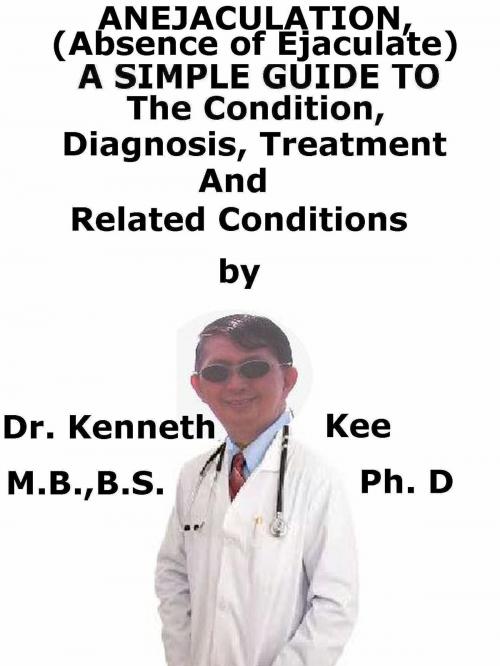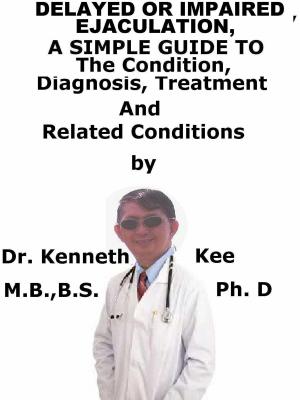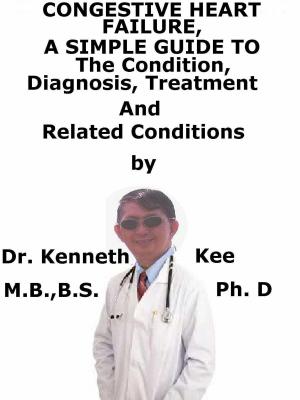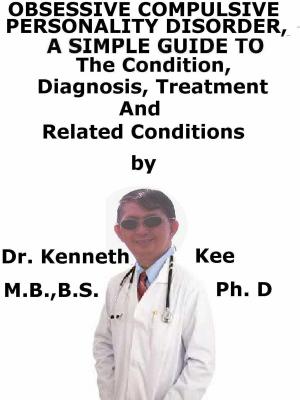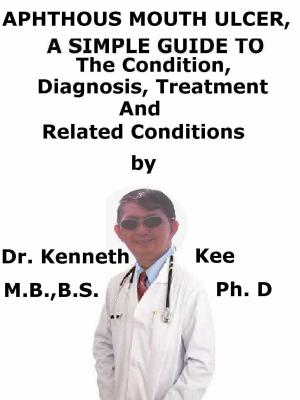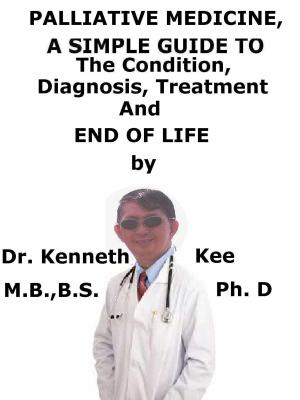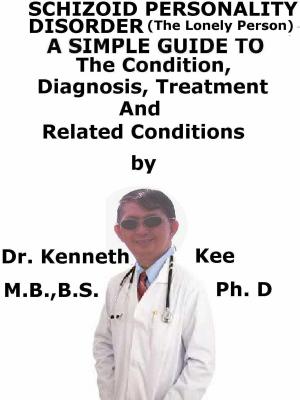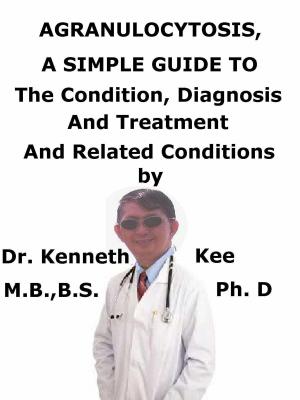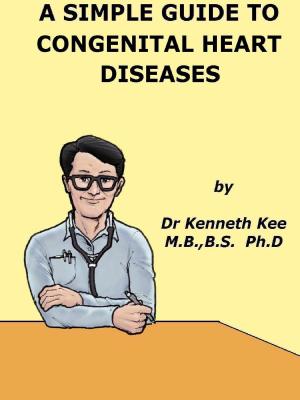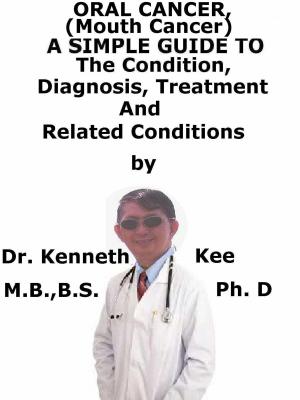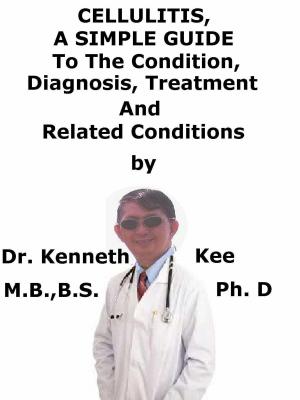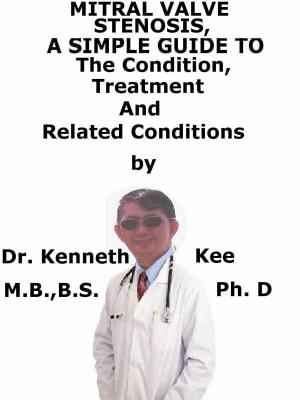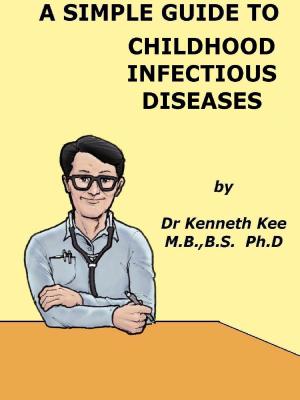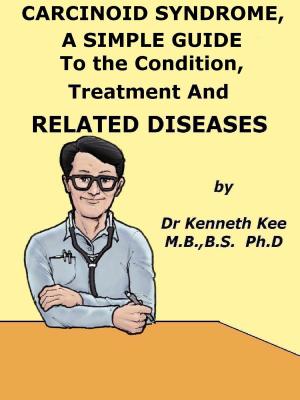Anejaculation, (Absence of Ejaculate) A Simple Guide To The Condition, Diagnosis, Treatment And Related Conditions
Nonfiction, Health & Well Being, Medical, Specialties, Reproductive Medicine, Health, Men&| Author: | Kenneth Kee | ISBN: | 9781370093748 |
| Publisher: | Kenneth Kee | Publication: | August 1, 2017 |
| Imprint: | Smashwords Edition | Language: | English |
| Author: | Kenneth Kee |
| ISBN: | 9781370093748 |
| Publisher: | Kenneth Kee |
| Publication: | August 1, 2017 |
| Imprint: | Smashwords Edition |
| Language: | English |
Recently I have an elderly patient who is unable to ejaculate even though he is able to manage an erection.
His wife felt that is unusual and wonder whether there is a blockage in the seminal ducts.
He is also depressed because he felt that he should be able to ejaculate.
What is Anejaculation?
Anejaculation is a disorder typically featured by the absence of ejaculation.
Anejaculation is described as the inability to ejaculate semen; the word means “no ejaculation.”
With this disorder, a man can produce sperm but cannot ejaculate or expel them during normal ejaculation even though anejaculation often is accompanied with normal orgasmic sensation.
Anejaculation can be placed into several categories:
1. Situational anejaculation is when a man can ejaculate in some circumstances but not in others.
Often, this type of anejaculation is caused by stress in situations such as being in the fertility clinic
Also, if a man can ejaculate during intercourse but cannot ejaculate through masturbation
2. Total anejaculation:
Total anejaculation is when a man is not able to ejaculate semen either during intercourse or by masturbation, at home or in the clinic.
Total anejaculation also can be divided into:
a. Anorgasmic anejaculation - A man who can not reach an orgasm while awake, but can reach orgasm, and ejaculation, while asleep at night.
In these patients, psychological factors rather than physical ones tend likely to cause the disorder
b. Orgasmic anejaculation - A man can reach and achieve orgasm, but cannot ejaculate semen.
This failure to release semen can be because of a blockage in the tubes or damage to the nerves
Anejaculation can also be categorized as primary or secondary.
1. Primary anejaculation is when ejaculation has never been experienced in a man's entire lifetime
2. Secondary anejaculation is when a man is unable to ejaculate after he has the experience of normal sexual functioning
The causes can be psychological and physical.
1. Psychological anejaculation is normally anorgasmic i.e. not accompanied by orgasm.
2. Physical or organic anejaculation can happen due to neurogenic and obstructive causes
Spinal cord injuries
a. Disorders that involve the nervous system
2. Traumatic injury or infection to the pelvis area
3. Surgical treatment needing the removal of lymph nodes located in the groin
4. Surgeries that may produce damage to the pelvic area
Psychological factors can play a part (e.g. anxiety, fear of causing pregnancy)
Diagnosis is by absence of sperm ejaculate.
Post-ejaculation urine analysis is done to see if there is sperm in the urine sample.
When the urine sample contains sperm, the patient will be treated for RE (retrograde ejaculation).
When the post-ejaculation urine does not contain sperm the patient will be given treatment for AE.
There are several methods of treatment for men with anejaculation; the main focus of which is to retrieve sperm for artificial insemination.
If situational anejaculation is because of psychological causes it can often be treated by simple methods such as psychological or sexual counseling.
When the cause of anejaculation is because of a physical disorder then the patient will have to discuss with the doctor to find out exactly what is happening and what action can be taken.
The treatment is dependent on the cause and includes psychosexual counseling, drugs such as ephedrine and imipramine, vibrator therapy and electroejaculation
The last is a method in which an electrical current is applied to the ejaculatory organs to stimulate ejaculation.
Success rates are nearly 100 %.
Vibrator stimulation leads to ejaculation in about 60% of men.
A block due to infection can occasionally be cleared by surgery.
TABLE OF CONTENT
Introduction
Chapter 1 Anejaculation
Chapter 2 Causes
Chapter 3 Symptoms
Chapter 4 Diagnosis
Chapter 5 Treatment
Chapter 6 Prognosis
Chapter 7 Male Orgasm
Chapter 8 Sexual Intercourse
Epilogue
Recently I have an elderly patient who is unable to ejaculate even though he is able to manage an erection.
His wife felt that is unusual and wonder whether there is a blockage in the seminal ducts.
He is also depressed because he felt that he should be able to ejaculate.
What is Anejaculation?
Anejaculation is a disorder typically featured by the absence of ejaculation.
Anejaculation is described as the inability to ejaculate semen; the word means “no ejaculation.”
With this disorder, a man can produce sperm but cannot ejaculate or expel them during normal ejaculation even though anejaculation often is accompanied with normal orgasmic sensation.
Anejaculation can be placed into several categories:
1. Situational anejaculation is when a man can ejaculate in some circumstances but not in others.
Often, this type of anejaculation is caused by stress in situations such as being in the fertility clinic
Also, if a man can ejaculate during intercourse but cannot ejaculate through masturbation
2. Total anejaculation:
Total anejaculation is when a man is not able to ejaculate semen either during intercourse or by masturbation, at home or in the clinic.
Total anejaculation also can be divided into:
a. Anorgasmic anejaculation - A man who can not reach an orgasm while awake, but can reach orgasm, and ejaculation, while asleep at night.
In these patients, psychological factors rather than physical ones tend likely to cause the disorder
b. Orgasmic anejaculation - A man can reach and achieve orgasm, but cannot ejaculate semen.
This failure to release semen can be because of a blockage in the tubes or damage to the nerves
Anejaculation can also be categorized as primary or secondary.
1. Primary anejaculation is when ejaculation has never been experienced in a man's entire lifetime
2. Secondary anejaculation is when a man is unable to ejaculate after he has the experience of normal sexual functioning
The causes can be psychological and physical.
1. Psychological anejaculation is normally anorgasmic i.e. not accompanied by orgasm.
2. Physical or organic anejaculation can happen due to neurogenic and obstructive causes
Spinal cord injuries
a. Disorders that involve the nervous system
2. Traumatic injury or infection to the pelvis area
3. Surgical treatment needing the removal of lymph nodes located in the groin
4. Surgeries that may produce damage to the pelvic area
Psychological factors can play a part (e.g. anxiety, fear of causing pregnancy)
Diagnosis is by absence of sperm ejaculate.
Post-ejaculation urine analysis is done to see if there is sperm in the urine sample.
When the urine sample contains sperm, the patient will be treated for RE (retrograde ejaculation).
When the post-ejaculation urine does not contain sperm the patient will be given treatment for AE.
There are several methods of treatment for men with anejaculation; the main focus of which is to retrieve sperm for artificial insemination.
If situational anejaculation is because of psychological causes it can often be treated by simple methods such as psychological or sexual counseling.
When the cause of anejaculation is because of a physical disorder then the patient will have to discuss with the doctor to find out exactly what is happening and what action can be taken.
The treatment is dependent on the cause and includes psychosexual counseling, drugs such as ephedrine and imipramine, vibrator therapy and electroejaculation
The last is a method in which an electrical current is applied to the ejaculatory organs to stimulate ejaculation.
Success rates are nearly 100 %.
Vibrator stimulation leads to ejaculation in about 60% of men.
A block due to infection can occasionally be cleared by surgery.
TABLE OF CONTENT
Introduction
Chapter 1 Anejaculation
Chapter 2 Causes
Chapter 3 Symptoms
Chapter 4 Diagnosis
Chapter 5 Treatment
Chapter 6 Prognosis
Chapter 7 Male Orgasm
Chapter 8 Sexual Intercourse
Epilogue
